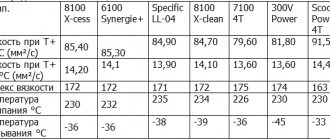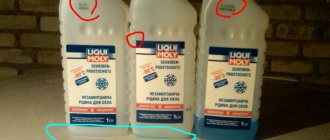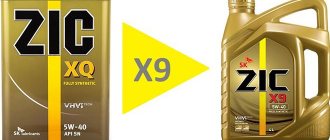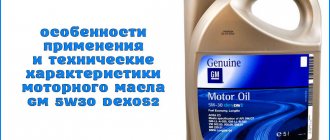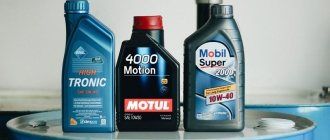Types of base stocks for synthetic oils
The properties and characteristics of synthetic oil directly depend on the chemical structure of its base. The industry produces several types of bases used to produce such lubricating materials. Among them are the following.
- Polyalphaolefin oils (PAO). This is the most common group of synthetic lubricants, has universal properties and can be used over a wide temperature range. They have a high viscosity index and are stable throughout their service life. Polyalphaolefin synthetic oil does not cause corrosion processes in the metal of the working mechanism and does not have a negative effect on rubber sealing elements. PAO is the basic basis for the manufacture of hydraulic and transmission fluids, as well as industrial and compressor oils for mechanisms operating under heavy loads and increased temperatures. PAO can be mixed with mineral components and used to produce semi-synthetic oils. Synthetic universal lubricants for food equipment are made based on PAO.
- Alkylated aromatic oils (X). This group of synthetic oils includes products based on alkylbenzene, characterized by a low viscosity index. They are used to produce compressor oils. This also includes compositions based on dialkylbenzene, which has excellent low-temperature properties.
- Polyglycol oils (PG). This is a large group of lubricants used as coolants in metallurgy and for the production of transmission and hydraulic fluids. PGs are not used for the manufacture of motor oils, as at high temperatures they have corrosive properties, which negatively affects the internal combustion engine. Synthetic lubricants based on PG components have a high viscosity index, antioxidant ability, low pour point and low flammability.
- Polyester oils (POE). Due to their very high viscosity index and low pour point, these products are widely used in the aviation industry. Can be used as a component of semi-synthetic oils to improve their performance.
- Phosphoric acid ester oils (PH). This synthetic oil creates a protective phosphate anti-scuff film on the parts of the working mechanism, which prevents wear of the rubbing elements. Lubricants of this type are non-flammable.
- Silicone synthetic oils (SI). These materials are heat-resistant and chemically inert, but do not have high lubricity. Therefore, they are used for the manufacture of hydraulic fluids and electrical oils.
Which synthetic oils to use to lubricate working mechanisms is determined not only by their composition and purpose, but also by operating conditions.
Production technology
What are synthetic motor oils made from? They are made by synthesis, based on petroleum products. Using organic synthesis, it is possible to obtain a variety of compounds, so synthetic liquids differ from each other in composition. There are synthetics based on:
- polyalphaolefins (PAO);
- glycols;
- silicones (polyorganosiloxanes);
- esters.
PAO synthetics are very popular. It has a high viscosity index, ensures engine starting without warming up at sub-zero temperatures, and protects the power unit from overheating in summer. It is made by combining short hydrocarbon chains of butylene or ethylene into long chains. The longer the chain and the more homogeneous the atoms in it, the more resistant the structure of the motor oil is to destruction. Under non-ideal operating conditions of power units (the number of revolutions, load, temperature, speed changes), the resistance of the fluid to destruction plays an important role. To increase engine life, it is necessary that the lubricant does not crystallize at sub-zero temperatures and maintains its density at very high temperatures. PAO oils meet the specified requirements.
Motor mixtures based on esters are a product of neutralization of carboxylic acids with alcohols. The main advantage of such synthetics is the polarity of the ester molecules, allowing them to adhere to the metal surface inside the engine. Due to this property, in synthetic ester motor oils there is no need to use additives that burn out in the engine and form carbon deposits on the elements of the power unit. This motor mixture costs 10 times more than mineral water.
Synthetics based on glycols cannot be mixed with mineral water, semi-synthetics or synthetics with another base. Therefore, glycol motor mixtures have practically ceased to be made; glycols are used to make antifreeze.
Watch a video about the properties of synthetic motor oils:
Additives for synthetic lubricants
There are two ways to increase the functional properties of the oil:
- improving the basic framework,
- doping with additives.
Synthetic oil, improved with the help of additives introduced into it, is called compounded.
Several subgroups are classified, differing in their functional action:
- viscosity – viscosity index modifiers;
- lubricants – antifriction, antiwear, metal cladding, etc.;
- antioxidants – antioxidants;
- anti-corrosion – corrosion inhibitors;
- detergents;
- anti-foam, etc.
Most additives are multifunctional, packaged by the manufacturer and introduced into the base. Some oils may contain 20–30 components.
Additive package - composition and contents
The share of modifiers in motor oils is 10%. There are many ready-made “additive packages” that include a set of components to increase the required parameters of the lubricant. We list the most important connections:
- High molecular weight calcium alkyl sulfonate is a cleaning agent. Share: 5%.
- Zinc dialkyldithiophosphate (Zn-DADTP) - protects the metal surface from oxidation and mechanical damage. Content: 2%.
- Polymethylsiloxane is a heat-stabilizing (anti-foam) additive with a share of 0.004%
- Polyalkenyl succinimide is a detergent-dispersant additive, which is introduced together with anti-corrosion agents in an amount of up to 2%.
- Polyalkyl methacrylates are depressant additives that prevent the precipitation of polymers when the temperature drops. Share: less than 1%.
Along with the modifiers described above, finished synthetic and semi-synthetic oils may contain demulsifying, extreme pressure and other additives. The total percentage of the modifier package does not exceed 10–11%. However, some types of synthetic oils allow additive levels of up to 25%.
Benefits of synthetic lubricants
Due to a higher viscosity index than mineral and semi-synthetic lubricants, synthetic oil provides optimal film thickness on the surface of working mechanisms over a wide temperature range. As a result, wear of rubbing elements is reduced.
Synthetic lubricants are able to maintain their fluidity at low temperatures, which makes it possible to operate them in extreme conditions without the risk of premature wear of the working mechanism.
Oils based on synthetic materials have low volatility, which allows them to reduce their consumption during operation.
Synthetic materials have homogeneous molecular chains. Due to this, their coefficient of friction is reduced, which increases lubrication efficiency.
Synthetic lubricants have low thermal-oxidative properties, which significantly extends their service life.
Energy-saving motor oils
The difference between energy-saving motor oils and conventional ones is that their characteristics make the operation of vehicles more economical. For example, in the USA a special methodology has been adopted for testing motor oils depending on the viscosity class compared to the standard. According to this method, a lubricant that claims to be energy-saving should provide a reduction in fuel consumption by 0.5-1.4%.
In the case of tests according to the European method, this reduction is at least 2.5% compared to 15W-40 motor oil according to the SAE classification. The current ACEA classification in Europe and the international ILSAC classification even provide separate categories for energy-saving lubricants.
The consumer can determine whether the lubricant he has chosen belongs to the energy-saving category by the presence of the EU designation on the packaging (an abbreviation for “Energy Conserving”). It is usually indicated by the manufacturer near the API designation. In some cases, the decoding of this abbreviation is written at the bottom of the round logogram printed on the container. Sometimes, instead of EC, the labeling also writes FE, or Fuel Economy (translated as “fuel economy”).
Compatibility of synthetic lubricants
Sometimes it becomes necessary to add oil to the working mechanism, but the product that was originally poured into the system is not always available. In this case, a reasonable question arises: is it possible to mix synthetic oils from different manufacturers? Although there is no direct prohibition on such actions, according to the recommendations of the API (American Petroleum Institute), no more than 10% of another can be added to the original certified oil, provided that the viscosity is similar and the base is identical. It is assumed that no chemical reactions should occur between the components of the lubricant compositions, and the characteristics of the synthetic oil remain unchanged.
As the ratio increases, negative consequences may occur both for the oil itself and for the working mechanism. Additives, which vary from manufacturer to manufacturer, can enter into a chemical reaction with each other, and their exact composition in most cases is unknown and constitutes a trade secret. Therefore, their behavior can only be predicted experimentally - after long-term operation of the lubricated mechanism under load in a testing laboratory.
What is synthetic motor oil made from?
Base oil, which serves as the basis for the production of synthetic oils, is produced by chemical synthesis from ethylene gas obtained from the pyrolysis of oil and other lower hydrocarbons. Through complex reactions, it is converted into decene, from which polyalphaolefins with various properties are synthesized. To obtain motor oil, substances with the lowest viscosity and other suitable characteristics are selected. Then additives are added to the base oil to give it the necessary properties. There are base oils produced from other petroleum distillation products.
Motor oil marking
To purchase a synthetic motor oil suitable for a specific car, you should carefully study its labeling.
As an example, let's take the most popular synthetic oil today, 5W40. Thus, as the generally accepted SAE classification states, the canister of lubricant indicates its viscosity:
- The letter W and the number in front of it determine the winter class of the oil;
- The second number determines its summer class. The value of this number allows you to determine the viscosity properties of the oil at different temperatures, i.e. temperature range at which the lubricant has optimal properties.
The combination of these numbers is used to mark all-season oils, which are in high demand in our country due to significant average annual temperature changes.
In our climate, the use of oils of only winter or summer classes is irrelevant, since this requires frequent replacement of the lubricant, leading to unreasonable additional costs.
Ask a consultant for advice
Therefore, the most popular brands are 5W30 and 5W40, which can be used equally effectively throughout the year. According to the SAE classification, 5W30 synthetic oil is capable of maintaining its characteristics at temperatures from –35 to +30°, while the 5W40 brand is from –30 to +35°. This ensures the ease of cold starting without negative consequences in winter frosts, and the safety and performance of the engine in the summer heat.
